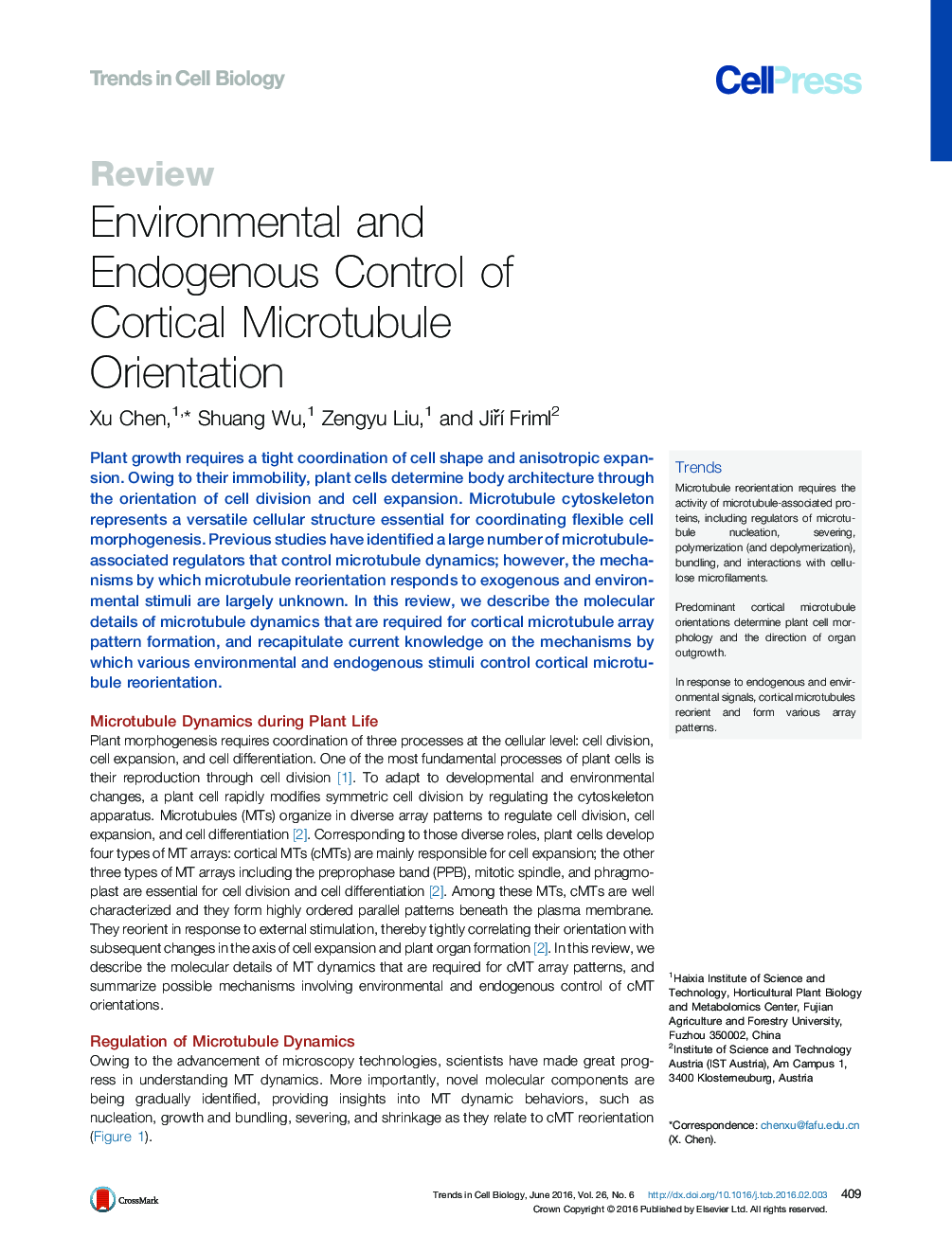| Article ID | Journal | Published Year | Pages | File Type |
|---|---|---|---|---|
| 2204291 | Trends in Cell Biology | 2016 | 11 Pages |
Plant growth requires a tight coordination of cell shape and anisotropic expansion. Owing to their immobility, plant cells determine body architecture through the orientation of cell division and cell expansion. Microtubule cytoskeleton represents a versatile cellular structure essential for coordinating flexible cell morphogenesis. Previous studies have identified a large number of microtubule-associated regulators that control microtubule dynamics; however, the mechanisms by which microtubule reorientation responds to exogenous and environmental stimuli are largely unknown. In this review, we describe the molecular details of microtubule dynamics that are required for cortical microtubule array pattern formation, and recapitulate current knowledge on the mechanisms by which various environmental and endogenous stimuli control cortical microtubule reorientation.
TrendsMicrotubule reorientation requires the activity of microtubule-associated proteins, including regulators of microtubule nucleation, severing, polymerization (and depolymerization), bundling, and interactions with cellulose microfilaments.Predominant cortical microtubule orientations determine plant cell morphology and the direction of organ outgrowth.In response to endogenous and environmental signals, cortical microtubules reorient and form various array patterns.
